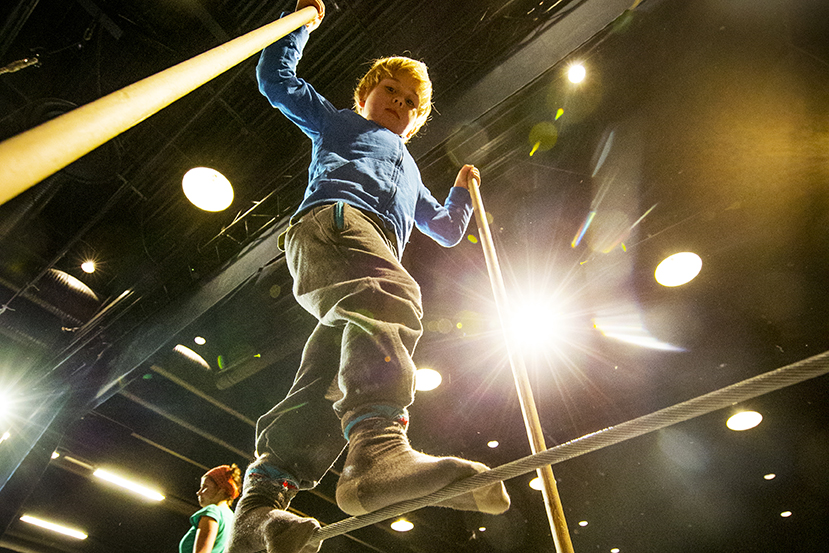Research indicates that the arts are pursued by the talented and able in Finland – equal access to arts education and artistic experiences is not the reality yet
ArtsEqual – the biggest research project in the arts in Finland –published a report on equality issues connected to arts education and basic services in the arts.

People who find their way to artistic activities and arts education and who are actively chosen to take part in them are individuals who have the best potential to succeed under the conditions dictated by the arts system, states the report published by the ArtsEqual research project, “Equality as the future path for the arts and arts education services”.
The report, published in October, provides an analysis of the findings from the largest research project in the arts in Finland. The ArtsEqual project (2015–2021) involved six research groups, which have produced over 200 research publications.
According to the report, arts professionals aim their arts education mostly to talented people and provide their arts services to those who actively seek them.
“In the arts, the ideal of normalcy pertains to a person who has fine-tuned senses, a body type that is perfectly suited to the artistic activity, and fine motor skills that are extremely precise. People who do not meet this ideal are regarded as incompetent or unable, and thus less worthy of participating in the arts or arts education,” researchers write.
Consequently, various population groups, such as disabled people, older people, people with special educational needs, and people whose bodies or senses do not reach the ableist ideal, are often excluded from the arts and arts education services.
Current funding decisions emphasise the novelty value and benefits of the arts
The current funding system is also one of the mechanisms that generate inequality.
“Our funding system emphasises the uniqueness and novelty value of the arts and the way the field passes on the artistic tradition. The system’s current structure does not give sufficient attention to accessibility and democracy,” the report states.
Outside of the world of arts, it is increasingly more common to respect the arts on the basis of the immediate financial or social benefits that the field brings, and these benefits are often used as the basis for funding allocation. Researchers are worried that if the link to economy or other benefits to society is not clear, the arts run the risk of failing to secure new funding.
No need for sectoral boundaries
The research report presents some of the mechanisms that make it easier for certain groups to gain access to the arts, while others have more difficulties. To tackle these problems and to improve the arts and arts education services that are funded by the government, the report describes numerous solutions that have been developed over the course of the ArtsEqual research project.
According to the report, groups that are currently excluded from the arts can be welcomed to explore the field by lowering the barriers to participation – the most straightforward measure could be transport services, for example – or by inviting residents to participate in the planning and development of their municipality’s artistic activities.
Researchers also find it important to try to abandon the rigid idea that each sector only has its own narrow set of obligations to meet. In fact, arts services should be integrated as part of elderly care, services for the unemployed, parish activities, and healthcare institutions.
The report also notes that institutions that are responsible for offering artistic activities should not simply wait for communities and arts enthusiasts to find their way to the arts, and instead, professionals in the field of arts and arts education could actively reach out to people and go to the places where the target group of the activities is already present.
The report also outlines four distinct future scenarios for the arts. It suggests the following phenomena as some of the trends that could shape the future, and consequently the social attitudes towards the arts, as well: the neoliberal requirement of market conformity, rise in neo-nationalism, an increasingly socially aware society, and society that invests in wellbeing.
A joint effort of a hundred researchers
The “ArtsEqual: Equality as the future path for the arts and arts education services” report has been written by Leena Ilmola-Sheppard, Pauli Rautiainen, Heidi Westerlund, Kai Lehikoinen, Sari Karttunen, Marja-Leena Juntunen, and Eeva Anttila.
The ArtsEqual project (2015–2021), coordinated by the University of the Arts Helsinki (Uniarts Helsinki), examined how art could increase social equality and wellbeing in Finland of the 2020s if it were understood as a public service. The project was funded by the Strategic Research Council at the Academy of Finland.
The ArtsEqual research consortium comprised five universities and research institutions. Uniarts Helsinki (coordinator), Foundation for Cultural Policy Research Cupore (Center for Cultural Policy Research Cupore), Lappeenranta-Lahti University of Technology (LUT), University of Turku and Finnish Institute of Occupational Health.
When research was first launched, over 30 researchers began studying questions related to the arts and equality. By spring 2021, the project had already involved nearly a hundred researchers, artists and doctoral students.